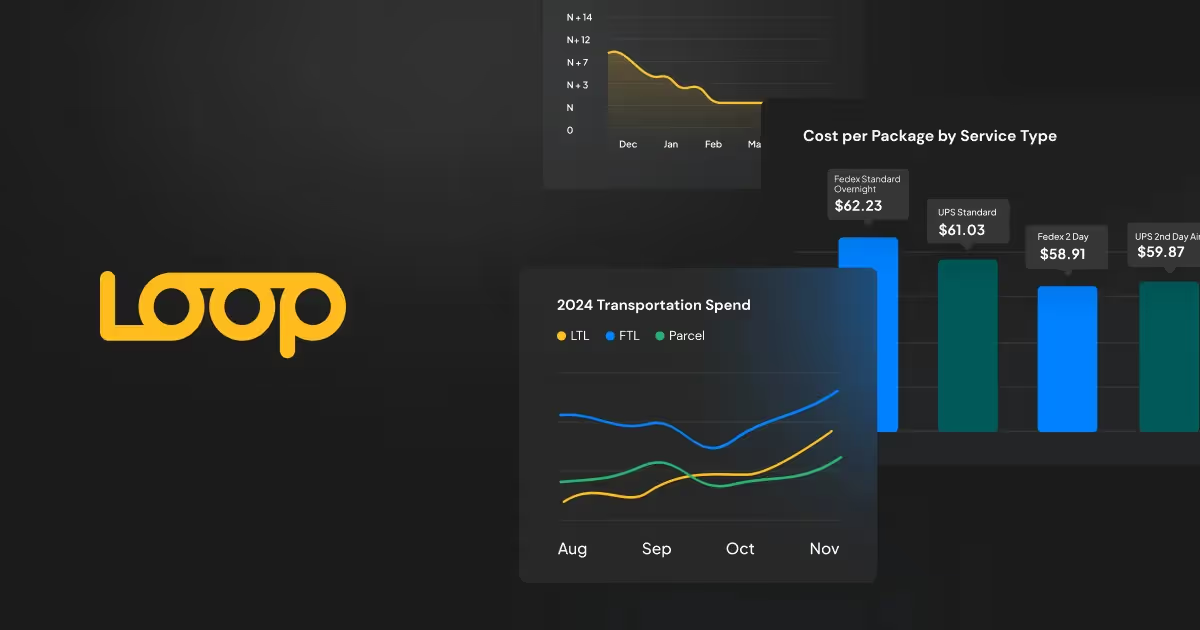
At Loop, we envision a future where the complexities of transportation logistics no longer hinder the flow of commerce. Our mission is to unlock hidden profit potential trapped within supply chains by transforming how transportation spend is managed. We aspire to create a seamless ecosystem where data drives every decision, empowering businesses to operate at peak efficiency and reduce costs for consumers globally.
Using advanced automation and a domain-driven atomic task system, Loop transcends traditional legacy processes, breaking down operational silos and uniting freight, parcel, and financial data into one coherent platform. This approach allows us to deliver thoughtful, data-powered solutions that streamline payments and operations, making logistics an advantage rather than a challenge.
We are committed to reshaping the future of transportation management through innovation and partnership, building a connected landscape where technology and expert guidance work hand in hand to fuel growth, transparency, and profitability for every stakeholder in the supply chain.
Our Review
We'll be honest—when we first heard about Loop, we thought it was just another logistics tech company trying to digitize trucking. But after digging into what Matt McKinney and Shaosu Liu built after their Uber Freight days, we realized this is something much more ambitious.
Loop isn't just moving data around. They're attacking one of the most stubborn problems in supply chain: the financial mess that happens when freight moves but payments don't follow smoothly.
The Problem They Actually Solve
Here's what caught our attention: Loop tackles the hidden complexity of transportation spend management. Most companies are drowning in freight invoices, parcel receipts, and financial reconciliation that takes weeks to sort out.
Their platform centralizes all this chaos—freight, parcel, and financial data—into one system that actually makes automated decisions. It's not just reporting; it's actively optimizing spend and catching errors before they become expensive problems.
Why the Funding Makes Sense
The $65 million total funding (Series A and B combined) tells a story. When you see Founders Fund, J.P. Morgan Growth Equity, and Index Ventures all backing the same logistics play, that's not coincidence.
What really impressed us was their partnership with J.P. Morgan for payments. This isn't just about moving money—it's about creating a financial infrastructure specifically designed for how logistics actually works, not how banks think it should work.
The Atomic Task Approach
Loop's "atomic task system" sounds like tech jargon, but it's actually clever. Instead of trying to automate entire workflows (which breaks constantly), they break everything down into tiny, manageable tasks that can be automated individually.
This means the system can handle exceptions and edge cases without falling apart—crucial when you're dealing with the unpredictable world of freight and logistics.
Who This Really Works For
Loop targets shippers, carriers, and 3PLs, but we think they're especially valuable for companies stuck between traditional logistics and modern expectations. If you're spending significant time reconciling transportation costs instead of optimizing them, Loop probably makes sense.
Their customer success model—dedicating team members to each account—suggests they understand that logistics transformation isn't just about software. Sometimes you need humans who actually get the complexity of supply chain operations.
Centralizes freight, parcel, and financial data
Automates decision-making and payments
Uncovers insights for transportation cost optimization
Provides self-serve platform for logistics payments
Integrates financial and operational data for efficiency








